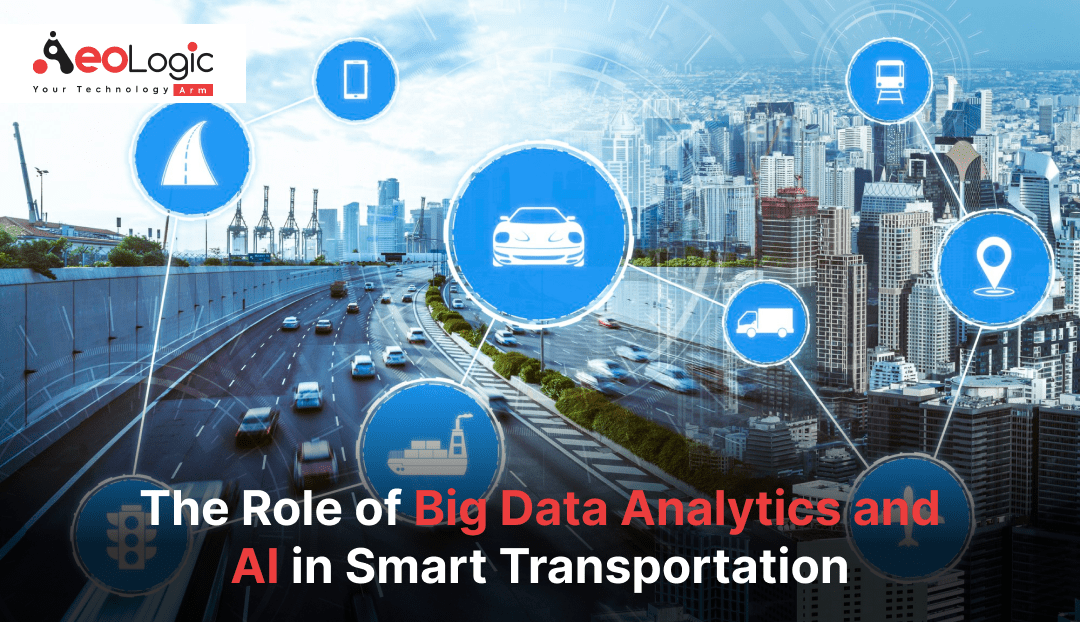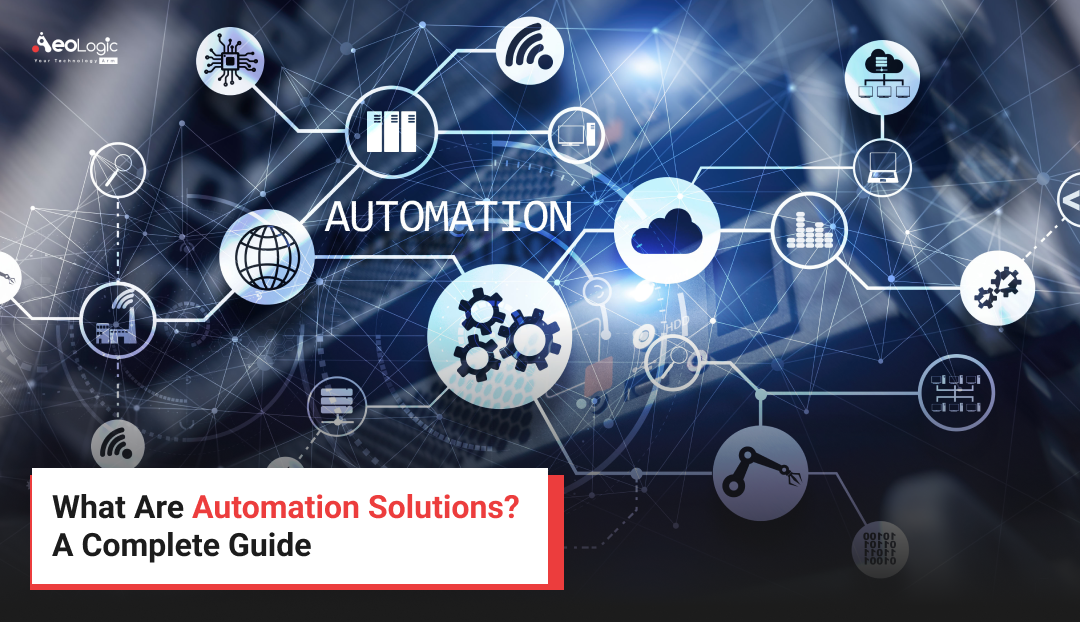In an era where technology continues to reshape our world, the transportation sector stands out as one of the most significantly impacted. The rise of smart transportation systems, powered by Big Data analytics and Artificial Intelligence (AI), is transforming how we move people and goods. These technologies not only enhance operational efficiency but also contribute to sustainability, safety, and user experience. In this blog, we will explore the pivotal role of Big Data and AI in shaping the future of smart transportation.
Also read: Improving Public Transportation Systems With Advanced Analytics
Understanding the Role of Big Data Analytics and AI in Smart Transportation
Smart transportation refers to the integration of advanced technologies in transportation systems to improve efficiency, safety, and sustainability. It encompasses a wide range of applications, from traffic management and public transportation to logistics and freight operations. The core of smart transportation lies in real-time data collection and analysis, enabling better decision-making and improved service delivery. Let us get deeper into the role of big data analytics and AI.
The Significance of Big Data in Transportation
Big Data analytics refers to the complex process of examining large volumes of data to uncover hidden patterns, correlations, and insights. In the context of transportation, Big Data is generated from various sources, including GPS devices, traffic cameras, social media, and IoT sensors embedded in vehicles and infrastructure.
Traffic Management
One of the primary applications of Big Data analytics in transportation is traffic management. By analyzing data from various sources, traffic management systems can optimize traffic flow, reduce congestion, and minimize travel times. For example, cities like Los Angeles and Singapore have implemented adaptive traffic signal systems that adjust signal timings based on real-time traffic conditions, significantly reducing wait times and improving traffic flow.
Predictive Analytics for Demand Forecasting
The role of Big Data analytics and AI also plays a crucial role in predicting transportation demand. By analyzing historical data, weather patterns, and social trends, transportation agencies can forecast peak travel times and adjust services accordingly. For instance, ride-sharing companies like Uber and Lyft utilize Big Data to predict demand surges and optimize driver allocation, ensuring that passengers receive timely service.
Enhanced Public Transportation
Public transportation systems benefit immensely from Big Data analytics. By collecting data on ridership patterns, service times, and route efficiency, transit authorities can make informed decisions about scheduling, routing, and resource allocation. For example, cities like New York and London use Big Data to monitor subway and bus performance, enabling them to address issues proactively and improve overall service reliability.
The Role of AI in Smart Transportation
While Big Data provides the foundational insights, AI adds a layer of intelligence that enhances decision-making processes and automates various aspects of transportation systems. The role of big data analytics and AI algorithms can process vast amounts of data at lightning speed, identifying patterns and making predictions with remarkable accuracy.
Autonomous Vehicles
One of the most revolutionary applications of AI in transportation is the development of autonomous vehicles. Companies like Tesla, Waymo, and many others are leveraging AI to create self-driving cars capable of navigating complex environments. These vehicles rely on AI algorithms to process data from sensors, cameras, and LiDAR, allowing them to make real-time driving decisions. The result is a potential reduction in traffic accidents, improved traffic flow, and greater accessibility for individuals unable to drive.
Smart Traffic Management Systems
AI enhances traffic management systems by enabling more sophisticated modeling and prediction capabilities. For example, AI algorithms can analyze traffic patterns and predict congestion before it occurs, allowing traffic authorities to implement proactive measures, such as rerouting traffic or adjusting signal timings. This capability not only alleviates congestion but also reduces emissions, contributing to a greener urban environment.
Safety and Security
AI plays a crucial role in improving safety within transportation systems. Advanced driver-assistance systems (ADAS), powered by AI, can detect potential hazards and alert drivers, significantly reducing the risk of accidents. Moreover, AI-based surveillance systems can monitor public transportation hubs, identifying suspicious behavior and enhancing security measures in real time.
The Intersection of Big Data and AI
The synergy between Big Data analytics and AI creates powerful solutions for smart transportation. By combining the data-driven insights from Big Data with the predictive and automated capabilities of AI, transportation systems can achieve unprecedented levels of efficiency and safety.
Personalized Transportation Solutions
The integration of Big Data and AI allows for the development of personalized transportation solutions. Ride-sharing platforms, for instance, use both technologies to analyze user preferences, travel history, and real-time traffic data, offering tailored ride options that cater to individual needs. This personalization not only enhances user experience but also optimizes resource allocation for service providers.
Sustainability Initiatives
Sustainability is a pressing concern for modern transportation systems. Big Data analytics can assess the environmental impact of various transportation modes, while AI can suggest optimal routes for electric and hybrid vehicles, minimizing energy consumption. Together, these technologies can help cities achieve their sustainability goals, reducing carbon emissions and promoting greener alternatives.
Enhanced Decision-Making for Urban Planning
Big Data and AI provide valuable insights for urban planners, enabling them to design more efficient and sustainable transportation networks. By analyzing patterns of urban mobility and predicting future growth, cities can make informed decisions about infrastructure investments, ensuring that transportation systems evolve alongside changing demographics and user needs.
Challenges and Future Directions
While the potential of Big Data and AI in smart transportation is immense, several challenges remain. Data privacy concerns, integration of legacy systems, and the need for standardized data formats pose significant hurdles. Moreover, the rapid pace of technological advancement requires continuous adaptation and investment.
Looking ahead, the future of smart transportation will likely be characterized by greater collaboration between public and private sectors, fostering innovation and expanding access to advanced transportation solutions. As cities become increasingly interconnected, the role of Big Data and AI will be vital in creating efficient, safe, and sustainable transportation systems that meet the demands of a growing population.
Also read: How AI Enhances Personalized Shopping with Recommendation
Conclusion
The intersection of Big Data analytics and AI is revolutionizing the transportation landscape. By harnessing the power of these technologies, cities and transportation providers can enhance efficiency, safety, and user experience while contributing to sustainability efforts. As we continue to embrace smart transportation solutions, the potential for creating a more connected and efficient world is limitless. The journey towards smarter transportation is just beginning, and the possibilities are exciting.







